Pakistan: a fight over the future of Karachi’s historic buildings
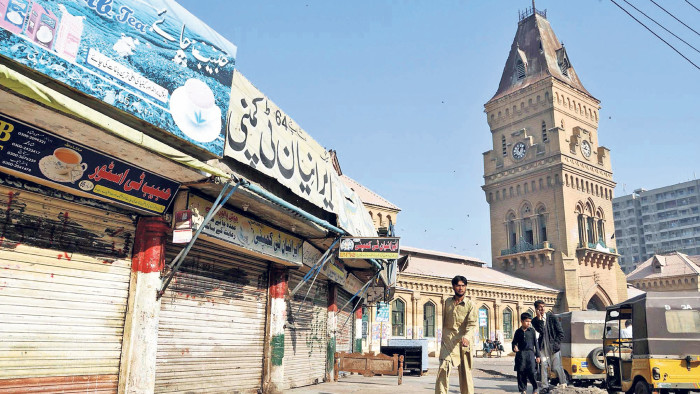
Simply sign up to the Life & Arts myFT Digest -- delivered directly to your inbox.
Abdullah Haroon Road, formerly known as Victoria Road, runs through the centre of Karachi’s elite quarter. It is dotted with landmarks; the Sind Club, once the heart of British colonial society and now a members’ club; Frere Hall, a public building from the same era which is now a museum; and enormous houses set back from the road with generous gardens.
Imran Husain grew up at 22 Victoria Road. “It was a beautiful house on about an acre of land, like a farmstead even though it was, even then, a well traversed road leading up to the main train station,” he says.
The property was built before the creation of Pakistan in 1947 not by the British but by a wealthy Parsee (Zoroastrian) family. Like many other residences in this area of Karachi, its architecture told the story not just of colonisation but also of the rise of the mercantile class. The style, termed “imperial vernacular” by architects, was inspired by the western designs prevalent across the subcontinent at the time, but also incorporated elements of local design.
Husain’s father sold the house 25 years ago. It was bought by property developers who, seeing the value of the land in this desirable area, promptly knocked it down. Sixteen smaller houses now stand in its place. “The new structures are built with no respect for zoning, no consideration of water and sewerage,” says Husain. “The whole thing is a mess.”
Today, Karachi, the sprawling megacity on Pakistan’s southern coast, is best known for violence. As the country’s economic hub, it has undergone an exponential rise in population, from 435,000 in 1947 to between 18m and 25m today. An underfunded and undersized police force has struggled to keep pace, and Karachi is home to a complex web of vying criminal gangs. Police figures show that there were 2,700 murders in 2013.
Of course, this was not always the case. The British arrived in Karachi in 1839 and declared it the capital of Sindh province in 1843. A port city, it quickly became immensely prosperous. It contains many architecturally significant buildings both in the elite enclaves, built by the British and continued by wealthy locals, and in the older parts of town, which predate colonisation. Since most Mughal and Sultanate period architecture is found in Lahore, Karachi’s buildings have traditionally not been considered historically significant, but the city’s structures were built by local craftsmen, and often commissioned by local merchants.
As Karachi continues to grow at a dizzying pace, the prevailing attitude has been to knock down the old and build new, more useful – and more profitable – buildings instead. So, can these heritage homes be preserved? And do Karachi-ites want to preserve them?
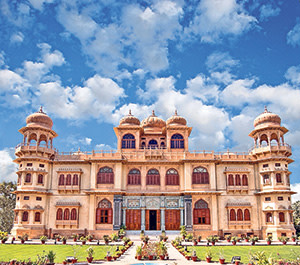
Karachi today is a highly functional city with large highways, many high-rise buildings, and new, half-built structures dotting the streets. The less prosperous areas are densely populated, with a multitude of narrow streets commonly found in many south Asian cities.
In the bustling district of Saddar, the ill-maintained façades of colonial-era retail buildings remain. Empress Market, built by the architect James Strachan in 1884-89, is perhaps one of the best known. Built around a courtyard with a clock tower, it is still in use as a market selling everything from clothes to spices.
These old structures – generally low-rise, with space built around them – act as punctuation to the hectic bustle of the streets. However, they are, for the most part, poorly preserved.
Yasmeen Lari is the director of the Heritage Foundation, an organisation she established in 1980. “Back then there was very little understanding of urban historic architecture,” she says. “Cities like Karachi were not considered to be historic because they were largely built by the British, with whom there has been a love-hate relationship. Traditionally, people thought British buildings were of no value, and it was better to demolish them and be done.”
The situation began to change in 1994, when the Sindh Cultural Heritage (Preservation) Act was passed, giving protected status to about 600 buildings in Karachi. However, land in this rapidly growing city is more valuable than history. Husain’s childhood home housed five people, whereas its replacement has space for 60, generating substantially more revenue for the new owners. This emphasis on maximising space – and profits – frequently takes precedence over preservation. Since the laws were changed, many historic buildings have been saved – including Flagstaff House, the former residence of Pakistan’s founder, Mohammed Ali Jinnah. Now a museum, it was nearly demolished to make way for a multistorey commercial building. Many others have already been destroyed.
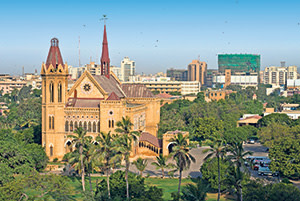
Husain’s former home was knocked down well before heritage laws were introduced. But even now, protected buildings are not always safe. Across the board in Pakistan, weak state institutions mean that many laws are not effectively enforced, and the case of preserving heritage is no different.
Ayaz Fakir experienced this first-hand. In 1985, he bought a property behind the Sind Club. It was built in 1926 by the Dinshaw family, wealthy Parsee merchants who commissioned many buildings, including the current residence of the US ambassador.
Fakir’s house was situated on a hectare of land. “It was a ruin, but over the course of years we restored it,” he says. “We uprooted and relaid the floors, always keeping in mind the original patterns.”
In 1994, the house was given heritage status, meaning it was legally protected from changes that would detract from the building. Things did not run smoothly, however. A previous owner had leased out part of the land. Although Fakir temporarily regained ownership of the entire plot, the army took over a section of it when his lease ran out and promptly started building housing for soldiers.
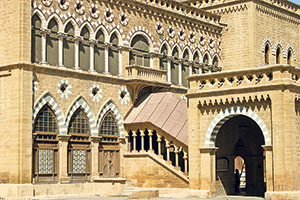
Fakir and his family sold the house (now set to become a museum), but the large army building on the adjacent plot – so close it is almost touching – overshadows the house and diminishes its historic grandeur. “The house remains but the grounds are all gone,” says Lari. “When you look at a historic building you need to see its context, and how it belonged to that enclave.”
In Karachi, land and space are immensely valuable commodities. Disputes over ownership of property are commonplace, a situation compounded by the city’s complex political history. After partition from India, there was a huge change of population; most Hindu landowners abandoned their homes to go to India, while those migrating to the new Muslim homeland settled primarily in Karachi. “Multiple tenancies and joint ownerships have saved many historic residences,” says Lari. “If there is a single owner, the decision to demolish and build something new can be taken overnight, but when the owners have migrated to India and there are multiple long-term tenants, it is more difficult.”
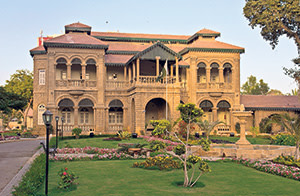
Owning a heritage building can be a mixed blessing. “I was fine with it as I had no intention of commercialising the plot, or selling it as anything but what it was,” says Fakir. “But my children were furious as it meant that the overall value of the house was lowered. It was sold for way below its value.”
Mohammed Siddiqui owns a British-era warehouse in Saddar. “Although I own property, I am not a wealthy man,” he says. “If I could knock down this derelict structure and sell the land or build something with high rental value, it would secure my children’s future. But I cannot even sell it for a fair price.”
When the Heritage Act was introduced in 1994, it was envisaged that government funding would maintain and restore historical buildings, but that has not happened.
The Heritage Foundation concedes that hostility from some owners of historic buildings continues two decades later because these properties are still not generating revenue in a city where land is gold.
For many, the preservation not just of the city’s history, but of beautiful buildings and green spaces, is an important aim. “Mine was no ordinary house – it was the most beautiful house in Karachi, not just as a heritage site but as an architectural delight,” says Fakir.
Of course, buildings affect more than just those who live in them. “Every city must have an identity, or the whole environment becomes anonymous,” says Lari. “These historic buildings are an oasis in a harsh environment. We have got to present Karachi as it was and make the city a more calming place.”
Comments